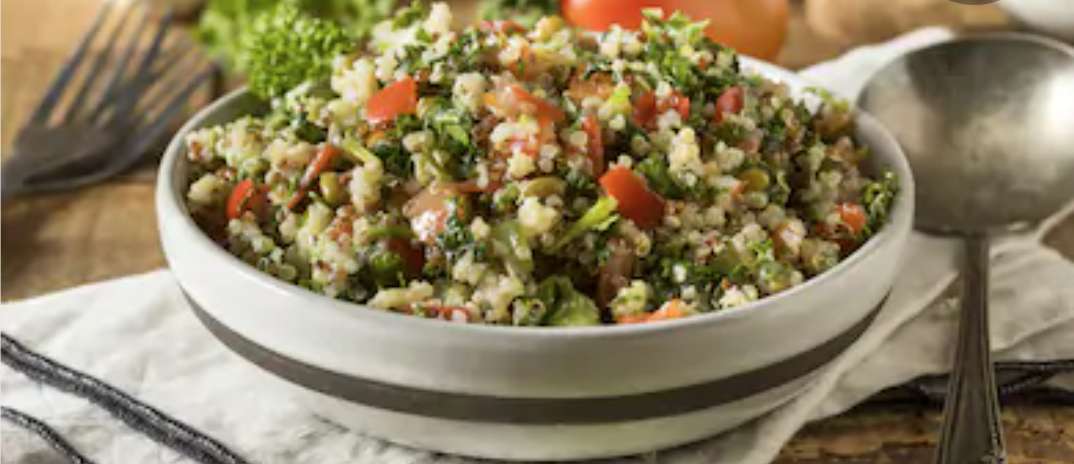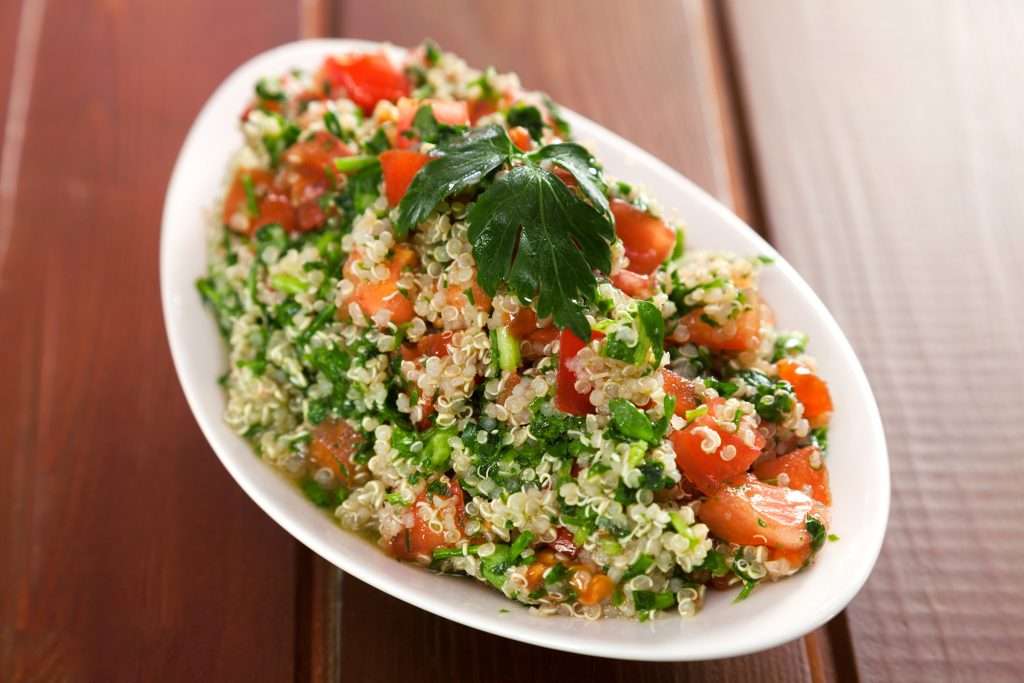That means it has all 8 of the essential amino acids (that’s what protein gets broken down into inside our bodies) that we need for optimal protein synthesis – and fyi, we all need these protein molecules not just for muscles, but for every single cell in the body! Yup, protein is the backbone structure of hormones, neurotransmitters, and everything else in the body. Pretty important stuff.
Quinoa is actually a seed, not a grain. This makes it paleo-friendly, and good for those who have troubles digesting grains. It’s also gluten-free.
Fibre is your friend! It not only supports digestive and intestinal health, which then contributes to an improved immune system and less inflammation, but it’s a proven fat-fighter too!
This is extra good news for the athlete whose high level training creates more oxidative damage in the body. If this is you, find out more about how to mitigate this with anti-oxidants here in our blog written especially for you!
Your Quinoa Questions Answered:
How much cooked quinoa does one cup dry quinoa yield? One cup dry quinoa yields about three cups cooked quinoa.
How much liquid do I need to cook quinoa? To cook one cup quinoa, you need about 2 cups liquid.
How long does it take to cook quinoa? One cup quinoa will cook in about 20 minutes.
How do I make quinoa less bitter? Nearly, if not all, of the natural bitterness of quinoa’s outer coating can be removed by a vigorous rinsing in a mesh strainer. Nowadays, when you buy quinoa it’s usually already been rinsed, but if you one of those people who find quinoa a little bitter or strong tasting, go ahead a give it a second rinse before cooking it.
How do I make better-tasting quinoa? Try cooking it in vegetable or chicken broth. Also, add a little sea salt to the water when cooking it. Or you could spice it up with a little smashed garlic, a sprig of fresh rosemary, or a dash of black pepper.


